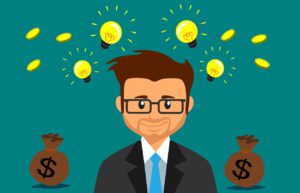
I believe that Robert Shiller’s Nobel-prize-winning research is legitimate research. I believe that most of today’s stock price is not reflective of economic realities but only of the temporary irrational exuberance of millions of highly emotional investors.
Q1 2020 hedge fund letters, conferences and more
Expect To See Another Price Crash
I also believe that we should be expecting to see another price crash sometime within the next year or two or three. Buy-and-Holders don’t fret too much about price crashes. They view them as being all part of the wonderful game, something that investors need to understand will turn up now and again but also something that one must endure if one wants to partake in the high returns generally delivered by stocks.
Because of my belief in Shiller’s model for understanding how stock investing works, I have a very different understanding of what is happening when stock prices crash. If price changes were determined by economic realities, a price crash would be indicative of an economy breaking down. And indeed Buy-and-Holders always point to economic developments as being the factors that caused a crash.
If today’s high prices are not the product of economic realities but of investor emotions that have gotten out of control, the place to look when trying to assign blame for a price crash is within the hearts of investors. What is happening when prices crash is that investors are losing confidence in the narratives they used to persuade themselves in earlier times that the high prices that preceded the crash were justified.
Stock Prices Applied Prior To A Crash
Say that we were to see a crash sometime within the next six months. Buy-and-Holders would point to the coronavirus crisis as the cause. There is no question but that the coronavirus matter is causing great harm to the economy and that we should expect to see stock prices fall in the event future developments are more discouraging than encouraging. But one’s belief as to what determined the stock prices that applied prior to a crash will have a big impact on one’s views as to what caused a crash.
The Buy-and-Holders believe that the stock prices that applied prior to the onset of the coronavirus matter were justified. If that were so, then it would follow that the coronavirus was the entire cause of the crash. I believe that the stock prices that applied prior to the arrival of the coronavirus problem were nutso. The CAPE value at the time was 32, which is double the fair-price CAPE value of 16. So we were set for a price crash even before the coronavirus arrived on the scene. All that the coronavirus can do is to serve as the precipitating event setting a crash into motion and to cause the crash to be more devastating than it would have been had it only been the overpricing feeding it.
What we call a price crash is really an emotions crash. Investors bid stock prices up to sky-high levels and then try to maintain confidence that the sky-high prices will remain in place. As soon as prices reach dangerous levels, the risk of a crash becomes present. But it can take many years for that objective risk to impress itself on the subjective thinking of the millions of investors who determine when that crash will take place. Stock prices entered dangerous territory in 1996 but there has only been one time-period of a few months in which the CAPE value dropped below fair-price levels in the 24 years since. HIgh prices signal a crash but the signal can be warning of an event that will not take place for a long, long time.
Economic Developments Alone Do Not Cause A Crash
It is a mistake to think that it is economic developments alone that cause a crash. If we think that and it is not so, we are unlikely to be able to do much to prevent future crashes. I think that we should be looking for shifts in investor emotion. It is shifts in emotion that cause prices to begin sliding and it is confirmation of those shifts that cause the sliding to gather momentum.
Investor confidence is a bit shaky today but if anything investors have underreacted to the coronavirus developments, which from an economic standpoint could end up being quite dire. The thing that worries me is that I have a hard time seeing how investors could be much reassured even if economic developments turn out to be more positive than expected. The unfortunate reality is that stocks were priced to crash before the pandemic began. If the coronavirus were to disappear, we would still be at great risk of a crash in the not-too-distant future. Bad news on the coronavirus front would only mean that the crash would hit sooner and harder.
Rob’s bio is here.
The post The Thing That We Call a Price Crash Is Really an Emotions Crash appeared first on ValueWalk.
